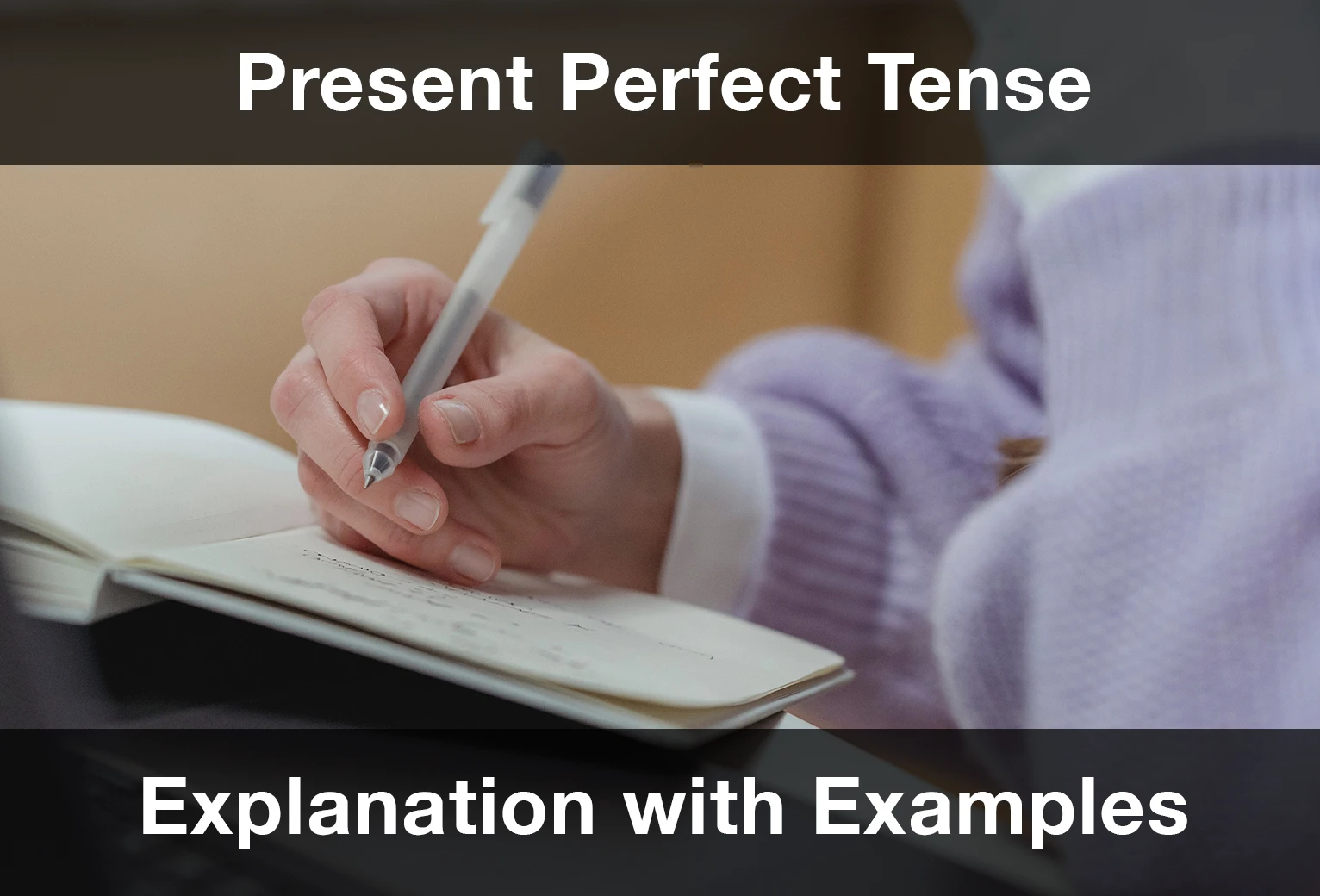Verbs are words that are used with a subject to say what something/someone does or what happens to them, or simply to inform the observer about their state of being. These verbs can be used with various tenses depending on the time that the action happens.The past continuous tense is a verb tense that shows an action or event that was going on or continuing for a short period of time in the past. If you are aiming to succeed at learning English, improving your knowledge about tenses will help you significantly. We have prepared a short guide for you to learn about Simple Past Tense, which will ultimately advance your gramatical sufficiency.
What is Past Continuous Tense
The past continuous tense is used to describe a continuing action or state that was happening at some point in the past. It is formed by combining the past tense of “to be” (was/were) with the verb’s present participle (-ing). It is also called the past progressive tense. It can describe actions that happened at a specific time in the past or actions that were interrupted by another event in the past.
What are Past Continuous Tense Grammar Rules?
The Past Continuous tense can be used to create positive and negative sentences or a question sentence (interrogative sentence).
Forming the Past Continuous Tense:
Use “was” with the first-person singular pronouns (I,he,she,it) and “were” with all other pronouns (you, we, they). The structure is:
Subject + was/were + (verb + -ing) + object + other words.
For example:
I was going to school.
He was playing a guitar.
They were eating dinner.
Forming Negative Sentences:
To form a negative sentence in the past continuous tense, we begin with the subject and we use the past tense of the verb “to be” (was/were) followed by “not” and then the present participle of the verb (verb + ing).
For example:
I was not studying for my exam.
She was not drinking the tea.
Asking Questions:
To form an interrogative sentence in past continuous tense, we use the past tense of the verb “to be” (was/were) followed by the subject and then the present participle of the verb (verb + ing).
For example:
Were you studying for your exam?
Was she going to school?
Structuring Sentences with Past Continuous Tense
The past continuous tense is used to describe an action that was happening at a time in the past. To form the past continuous tense, we use the past tense of the verb “to be” (was/were) followed by the present participle of the verb (verb + ing).The structure formula is:
Subject + Auxiliary Verb 2 (Was/Were) + Main Verb (-ing)
Subject: We begin the sentence with the subject (the person or thing performing the action).
Auxiliary Verb: We use the correct form of the auxiliary verb “to be” (Was/were) considering the subject.
Main Verb: We add the main verb in its “-ing” form.
Present Continuous Tense Positive Sentences
Positive sentences in the past continuous tense describe ongoing actions or activities that were happening at a specific past moment. Here’s an explanation of how to form positive sentences in the past continuous tense:
We begin with the subject (the person or thing performing the action).
We use the correct form of the auxiliary verb “to be” (Was/were) based on the subject.
Add the main verb in its “-ing” form.
To structure sentences with the past continuous tense, we need to follow this simple formula:
Subject + was/were + (verb + -ing) + object + other words
For example: He (Subject) + was (auxiliary verb) + going (Verb + -ing) + to school (object).
Positive Sentences
| Subject | Auxiliary Verb | Main Verb (-ing form) |
|---|---|---|
| I | Was/Were | Verb + -ing |
| You | Was/Were | Verb + -ing |
| We | Was/Were | Verb + -ing |
| They | Was/Were | Verb + -ing |
| He | Was/Were | Verb + -ing |
| She | Was/Were | Verb + -ing |
| It | Was/Were | Verb + -ing |
Here are some examples of positive sentences in the past continuous tense:
I was trying to pass my exam.
She was preparing lunch.
They were playing tennis.
He was watching anime.
We were walking in the forest.
You were listening to pop.
The children were looking out the window.
The dog was eating food..
The birds were flying loudly together.
The moon was shining brightly.
Past Continuous Tense Negative Sentences
If you need to talk about negative actions, all you need to do is to add the word “not” before the present participle and then you can form negative sentences.Negative sentence examples in the past continuous tense express the absence of ongoing actions.
We begin with the subject (the person or thing performing the action).
We use the correct form of the auxiliary verb “to be” (was not, were not) based on the subject.
We add “not” after the auxiliary verb.
Lastly, we add the main verb in its “-ing” form.
To structure sentences with the past continuous tense, we need to follow this simple formula:
Subject + Auxiliary Verb (Was/were) + Not + Main Verb (-ing)
For example: She (Subject) + was (Auxiliary verb) + not + coming (Main verb + -ing).
Negative Sentences
| Subject | Auxiliary Verb | Negative Adverb | Main Verb (-ing form) |
|---|---|---|---|
| I | Was/were | Not | Verb + -ing |
| You | Was/were | Not | Verb + -ing |
| We | Was/were | Not | Verb + -ing |
| They | Was/were | Not | Verb + -ing |
| He | Was/were | Not | Verb + -ing |
| She | Was/were | Not | Verb + -ing |
| It | Was/were | Not | Verb + -ing |
Here are some examples of negative sentences in the past continuous tense:
I was not trying to pass my exam.
She was not preparing lunch.
They were not playing tennis.
He was not watching anime.
We were not walking in the forest.
You were not listening to pop.
The children were not looking out the window.
The dog was not eating food.
The birds were not flying fast.
The moon was not shining brightly.
Past Continuous Tense Positive Interrogative Sentences
We form interrogative sentences in the past continuous tense in order to ask questions about ongoing actions or activities that were happening at a past moment present. These questions are neutral questions as they are not necessarily negative or positive. Here’s an explanation of how to form interrogative sentences in the simple present continuous tense:
We begin the sentence with the appropriate form of the auxiliary verb “to be” (was/were) according to the subject.
We use the correct subject after the auxiliary verb.
We finish with the main verb in its “-ing” form after the subject.
To structure interrogative sentences with the past continuous tense, we need to follow this simple formula:
Auxiliary Verb (Was/were) + Subject + Main Verb (-ing)
For example: Were (Auxiliary verb) + you (Subject) + listening (Main verb + -ing) ?
Interrogative Sentences
| Auxiliary Verb | Subject | Main Verb (-ing form) |
|---|---|---|
| Was / were | I | Verb + -ing |
| Was / were | You | Verb + -ing |
| Was / were | We | Verb + -ing |
| Was / were | They | Verb + -ing |
| Was / were | He | Verb + -ing |
| Was / were | She | Verb + -ing |
| Was / were | It | Verb + -ing |
Here are some examples of interrogative sentences in the past continuous tense:
Were you trying to pass your exam?
Was she preparing dinner?
Were they playing tennis?
Was he watching anime?
Were we walking in the forest?
Were you listening to pop?
Were the children looking out the window?
Was the dog eating food?
Were the birds singing loudly?
Was the moon shining brightly?
In each example, the auxiliary verb “to be” (was/were) is used at the beginning of the sentence, followed by the subject and the main verb in its “-ing” form. The question mark at the end indicates that it is an interrogative sentence.
Past Continuous Tense Negative-Interrogative Sentences
When writing a negative-interrogative sentence in the present continuous tense, we need to follow this simple formula:
Am/Is/Are + Not + Subject + Verb + ing + Object?
For example: Were (Auxiliary verb) + not + they (Subject) + playing (Verb+ -ing) tennis yesterday? (Object)
Negative-Interrogative Sentences:
| Auxiliary Verb | Negative Adverb | Subject | Verb | Complement |
|---|---|---|---|---|
| Was/Were | Not | I | Verb + -ing | Object |
| Was/Were | Not | You | Verb + -ing | Object |
| Was/Were | Not | We | Verb + -ing | Object |
| Was/Were | Not | They | Verb + -ing | Object |
| Was/Were | Not | He | Verb + -ing | Object |
| Was/Were | Not | She | Verb + -ing | Object |
| Was/Were | Not | It | Verb + -ing | Object |
Here are some examples of negative-interrogative sentences in the past continuous tense:
Wasn’t I trying for my exam?
Wasn’t she preparing dinner?
Weren’t they playing tennis?
Wasn’t he watching anime?
Weren’t we walking in the forest?
Weren’t you listening to pop?
Weren’t the children looking out the window?
Wasn’t the dog eating food?
Weren’t the birds singing loudly?
Wasn’t the moon shining brightly?
Short answers in Past Continuous Tense
Positive Answers:
| Confirmation word | Subject | Auxiliary Verb |
|---|---|---|
| Yes, | I | Was/were |
| Yes, | You | Was/were |
| Yes, | We | Was/were |
| Yes, | They | Was/were |
| Yes, | He | Was/were |
| Yes, | She | Was/were |
| Yes, | It | Was/were |
Negative answers:
| Denial word | Subject | Auxiliary Verb |
|---|---|---|
| No, | I | Was/were + NOT |
| No, | You | Was/were + NOT |
| No, | We | Was/were + NOT |
| No, | They | Was/were + NOT |
| No, | He | Was/were + NOT |
| No, | She | Was/were + NOT |
| No, | It | Was/were + NOT |
Wh- Questions in Past Continuous Tense
To form a wh-question in the present continuous tense, the Wh- question comes first, and then we use the auxiliary verb “to be” (was/were) followed by the subject and the present participle (-ing form) of the main verb.
When writing a Wh- question sentence in the present continuous tense, we need to follow this simple formula:
Wh-question word + auxiliary verb “to be” + subject + (-ing form) of the main verb
For example: Where (Wh- question) + was (Auxiliary verb) + I (Subject) + going?
| Wh- question | Auxiliary Verb | Subject | Verb |
|---|---|---|---|
| Who | Was/Were | I | Verb + (-ing) |
| Whose | Was/Were | You | Verb + (-ing) |
| Which | Was/Were | We | Verb + (-ing) |
| Where | Was/Were | They | Verb + (-ing) |
| What | Was/Were | He | Verb + (-ing) |
| Why | Was/Were | She | Verb + (-ing) |
| When | Was/Were | It | Verb + (-ing) |
| How | Was/Were | Verb + (-ing) |
Here are some examples of Wh- question sentences in the past continuous tense:
What was I doing for my homework?
What was she preparing for lunch?
How were they fishing?
What was he watching at the theater?
Where were we walking in the forest?
Who were you talking to?
What were the children jumping with?
Why wasn’t the dog eating food?
Where were the birds singing loudly?
Why wasn’t the moon shining?
The Adverbs of Time That Are Used in Past Continuous Tense:
Adverbs of time state the period of time that the action of the sentence occurs. In the past continuous tense, adverbs of time are usually placed at the end or the beginning of the sentence. The adverbs of time that are often used are:
Yesterday,
Last night,
This morning,
Today,
Last week,
Last month,
Last semester,
Last season,
Before,
Last tuesday.
Here are some example sentences that are formed with adverbs of time:
I was studying last week.
She was working yesterday.
They were watching a movie last sunday.
Last season, he was playing tennis.
We were traveling that day.
Frequently Asked Questions About Past Continuous Tense:
What is the difference between Past Continuous Tense and Past Perfect Continuous Tense?
Past continuous tense is used to describe actions or states that were happening at a past time; whereas Past perfect continuous tense is used to describe actions and states that started in a past time and continued up until another past time.
What is the difference between Past Continuous Tense and Simple Past Tense?
Simple past tense is used to describe an action that happened at a past time. It is formed by using the past tense of the main verb (V2). Past continuous tense is used to describe actions or states that were happening at a past time. We form sentences in the past continuous tense by using “to be” (was/were) and the present participle (-ing) of the main verb after it.
What is the difference between Past Continuous Tense and Simple Future Tense?
Past continuous tense is used to describe actions or states that were happening at a past time, on the other hand, Simple future tense is used to describe an action that will happen at a future time.
What is the Past Continuous Tense formula?
To form a sentence in the past continuous tense, we use the past tense of the verb “to be” (was/were) followed by the present participle of the verb (verb + ing). The formula is Subject + was/were + (verb + -ing) + object + other words.
Would you like to put what you have learned into practice? You can access everything you need to learn English on a single platform! With 25-minute one-on-one live English lessons, 40-minute group lessons, more than 30,000 interactive videos, vocabulary learning tools, AI-supported tutor MiMi, quizzes, and interactive activities, EnglishCentral offers its users a personalized and quality education plan at an affordable price. How about registering for EnglishCentral now and starting to learn English?











